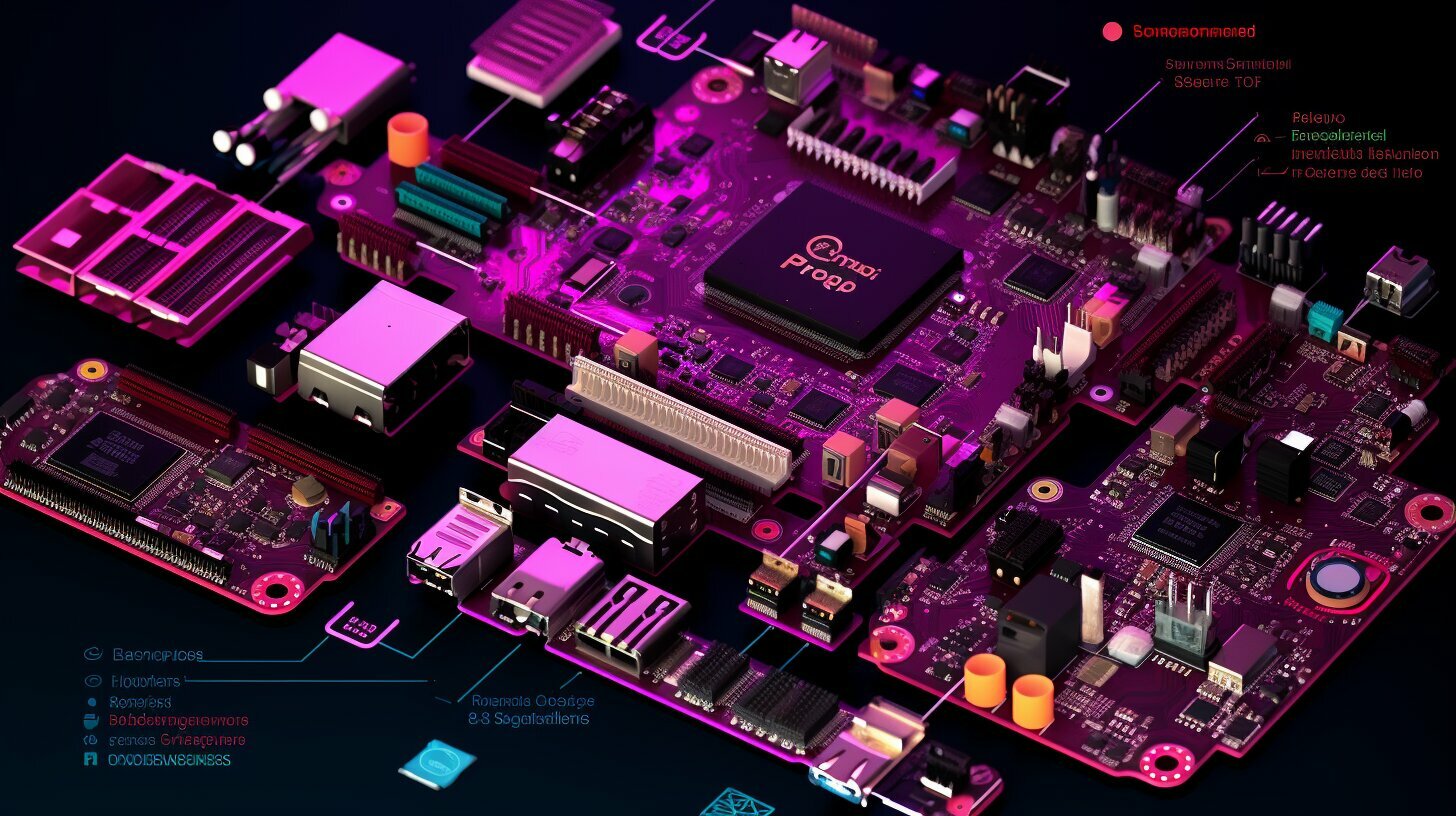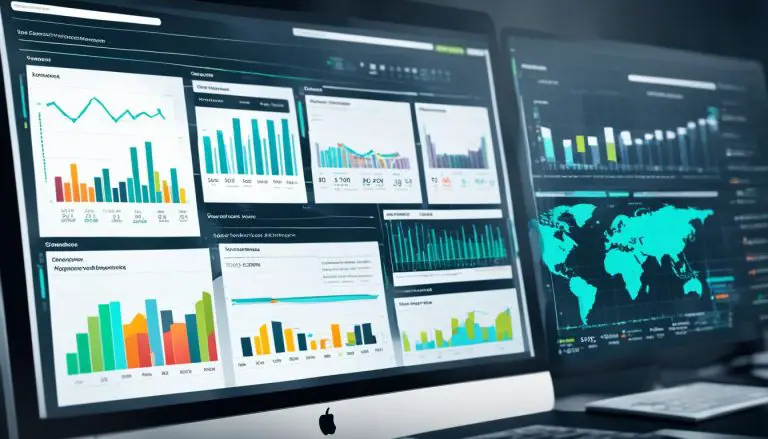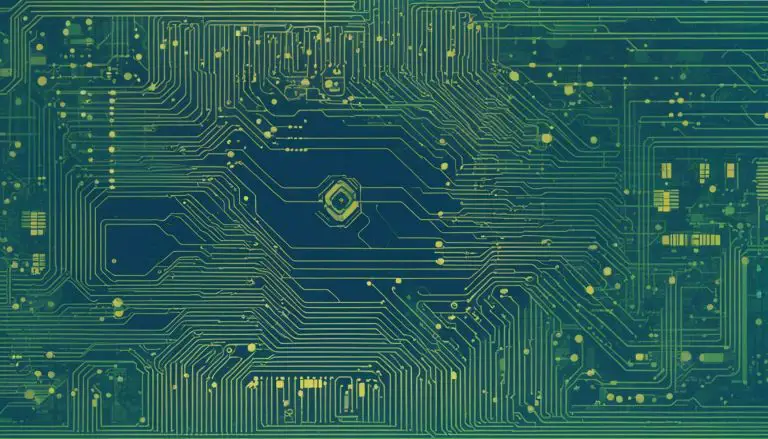Identifying Your Model: How to Tell Which Raspberry Pi You Have
Welcome to the guide on how to identify your Raspberry Pi model and determine which version you have. Identifying your Raspberry Pi model is crucial for ordering accessories and installing operating systems. Whether you’re a Raspberry Pi enthusiast or a newbie, knowing your specific model will ensure compatibility and optimal performance for your projects. In this article, I will walk you through several methods to help you identify your Raspberry Pi model accurately.
Key Takeaways:
- Identifying your Raspberry Pi model is essential for ordering compatible accessories and installing the appropriate operating systems.
- You can determine your Raspberry Pi model by checking purchase records, reading the model name on the board, or checking the processor information from the operating system.
- Some popular models of Raspberry Pi include Raspberry Pi 1, Raspberry Pi 2, Raspberry Pi Zero, Raspberry Pi 3, and Raspberry Pi 4, each with its own specifications.
- To maintain your Raspberry Pi’s health, use a proper power supply, protect it from moisture and extreme temperatures, avoid running multiple programs simultaneously, and keep it dust-free.
- If you suspect your Raspberry Pi is defective, perform physical checks, test the ports and connectivity, and try booting it up with a compatible operating system. Contact the manufacturer for further assistance if needed.
- Raspberry Pi offers a low-cost and versatile option for various projects, but it has limited power and storage compared to other computers.
Checking Purchase Records
One of the easiest ways to determine the version of your Raspberry Pi is by checking your purchase records. Keeping track of your purchase information can be invaluable in identifying the specific model you own. It allows you to refer back to the details of your purchase, such as the model number or any specific features, that can help in distinguishing different versions of Raspberry Pi.
You can check your purchase records by referring to the receipts or invoices from your retailer. Look for any mention of the specific model or version of the Raspberry Pi you bought. If you made the purchase online, you can also check your email for order confirmation or shipping notifications that may contain the necessary details.
By verifying your purchase records, you can easily determine the model of your Raspberry Pi without requiring any technical knowledge or disassembly of the board. This method is particularly useful if you have multiple Raspberry Pis or if you have owned your board for a long time and may have forgotten the details.
| Benefits of Checking Purchase Records: |
|---|
| Allows you to identify the specific model of your Raspberry Pi |
| Doesn’t require any technical knowledge or disassembly of the board |
| Useful for owners of multiple Raspberry Pis or those who have owned their board for a long time |
Referencing your purchase records is a simple and effective way to determine the version of your Raspberry Pi. In the event that you cannot locate your purchase information, there are alternative methods discussed in the following sections that can help you identify your Raspberry Pi model.
Reading the Model Name on the Board
Another method to identify your Raspberry Pi model is by reading the model name directly from the board itself. Each Raspberry Pi model has a unique model name printed on the PCB (Printed Circuit Board), which provides valuable information about the device. To find the model name, you will need to locate the specific area on the board where it is labeled.
Look for a distinctive text or logo near the center of the board. This area will typically contain the model name, along with other relevant details, such as the manufacturer’s logo. The model name is usually printed in a clear and legible font, making it easy to recognize and identify.
Once you have located the model name, take note of the alphanumeric code or labeling convention used. It may include numbers, letters, or a combination of both. This code will provide important information about your Raspberry Pi model, such as the generation, version, and any specific variants it belongs to.
| Model Name | Associated Raspberry Pi Model |
|---|---|
| Raspberry Pi 1 Model A+ | Raspberry Pi 1 |
| Raspberry Pi 2 Model B | Raspberry Pi 2 |
| Raspberry Pi Zero W | Raspberry Pi Zero |
By referencing the model name and using the provided table as a guide, you can accurately determine which Raspberry Pi model you have. This information will be essential for various purposes, such as ordering compatible accessories and selecting the appropriate operating system for installation.
Checking the Processor Information
By checking the processor information from the operating system, you can easily determine the model of your Raspberry Pi. This method provides a quick and reliable way to identify your specific version. Here’s how you can access the processor information and interpret it:
-
- Start by booting up your Raspberry Pi and logging into the operating system.
- Once you’re logged in, open a terminal window.
- Type the following command:
- Press Enter to execute the command.
- A detailed output will be displayed, listing information about your Raspberry Pi’s processor.
- Look for the line that starts with “model name”.
- The model name will be followed by a series of numbers and letters that indicate the specific version of your Raspberry Pi.
- Refer to the official Raspberry Pi documentation or online resources to compare the model name with the corresponding Raspberry Pi version.
By following these steps, you can easily distinguish between different Raspberry Pi models and identify the version of your device.
| Raspberry Pi Model | Processor | RAM | USB Ports |
|---|---|---|---|
| Raspberry Pi 1 | Broadcom BCM2835 | 256MB/512MB | 1 |
| Raspberry Pi 2 | Broadcom BCM2836 | 1GB | 4 |
| Raspberry Pi Zero | Broadcom BCM2835 | 512MB | 1 |
| Raspberry Pi 3 | Broadcom BCM2837 | 1GB | 4 |
| Raspberry Pi 4 | Broadcom BCM2711 | 2GB/4GB/8GB | 2 |
Referencing the table above, you can find more information about each model, including the processor, RAM, and the number of USB ports available. This will help you better understand the capabilities and specifications of your Raspberry Pi.
Different Models of Raspberry Pi
Raspberry Pi offers a range of models, including Raspberry Pi 1, Raspberry Pi 2, Raspberry Pi Zero, Raspberry Pi 3, and Raspberry Pi 4, each with its own unique features and specifications. Let’s take a closer look at these different models:
Raspberry Pi 1
The Raspberry Pi 1 was the first model released in 2012 and revolutionized the world of single-board computers. It features a single-core ARM11 processor, 512MB RAM, and a variety of ports, including two USB 2.0 ports, HDMI, and an Ethernet port. This model is a great choice for basic computing tasks, retro gaming, and educational projects.
Raspberry Pi 2
Released in 2015, the Raspberry Pi 2 offers significant improvements over its predecessor. It comes with a quad-core ARM Cortex-A7 processor, 1GB RAM, and four USB 2.0 ports. The increased processing power makes it suitable for more demanding applications, such as media streaming and light gaming.
Raspberry Pi Zero
The Raspberry Pi Zero is a compact and affordable model introduced in 2015. It features a single-core ARM11 processor, 512MB RAM, and a micro-USB port. Despite its size, it still offers a range of capabilities for IoT projects, portable devices, and embedded systems.
Raspberry Pi 3
The Raspberry Pi 3, released in 2016, is a significant upgrade from its predecessors. It boasts a quad-core ARM Cortex-A53 processor, 1GB RAM, and built-in Wi-Fi and Bluetooth connectivity. With its enhanced processing power and wireless capabilities, this model is well-suited for multimedia applications, home automation, and internet-of-things projects.
Raspberry Pi 4
The Raspberry Pi 4, launched in 2019, is the latest and most powerful model in the Raspberry Pi lineup. It features a quad-core ARM Cortex-A72 processor, up to 8GB RAM, USB 3.0 ports, dual-band Wi-Fi, and dual 4K display support. This model is ideal for demanding tasks, including 4K video playback, computer programming, and advanced robotics.
| Model | Processor | RAM | USB Ports | Wireless Connectivity |
|---|---|---|---|---|
| Raspberry Pi 1 | ARM11 | 512MB | 2 | No |
| Raspberry Pi 2 | ARM Cortex-A7 | 1GB | 4 | No |
| Raspberry Pi Zero | ARM11 | 512MB | 1 | No |
| Raspberry Pi 3 | ARM Cortex-A53 | 1GB | 4 | Yes |
| Raspberry Pi 4 | ARM Cortex-A72 | Up to 8GB | 2 or 4 | Yes |
As you can see, each Raspberry Pi model offers different specifications and capabilities to suit various needs and projects. Whether you’re a beginner or an experienced maker, there’s a Raspberry Pi model that can help you bring your ideas to life.
Tips for Maintaining Your Raspberry Pi
To ensure the longevity and optimal performance of your Raspberry Pi, it is important to follow these maintenance tips:
- Use a proper power supply: Always use a power supply that is compatible with your Raspberry Pi’s specifications. Using an improper power supply can lead to voltage fluctuations and potential damage to the board. Refer to the manufacturer’s guidelines for the recommended power supply to use.
- Protect from moisture and extreme temperatures: Raspberry Pis are sensitive to moisture and extreme temperatures. Avoid placing your Raspberry Pi in areas prone to high humidity or extreme heat. Consider using a protective case to shield the board from environmental factors.
- Avoid running multiple programs simultaneously: While Raspberry Pis are capable of multitasking, running multiple resource-intensive programs simultaneously can strain the board’s limited processing power. To prevent overheating and ensure smooth operation, avoid overloading your Raspberry Pi with too many simultaneous tasks.
- Keep it dust-free: Dust can accumulate on the components of your Raspberry Pi over time, hindering its performance and potentially causing overheating. Regularly clean your Raspberry Pi by gently blowing away dust using compressed air or using a soft brush. Be careful not to touch any sensitive electronic components directly.
“Maintaining your Raspberry Pi not only helps prolong its lifespan but also ensures that it operates at its full potential.”
Proper Power Supply for Raspberry Pi Models
| Model | Power Supply Voltage (V) | Power Supply Current (A) |
|---|---|---|
| Raspberry Pi 1 | 5 | ≥1 |
| Raspberry Pi 2 | 5 | ≥1.8 |
| Raspberry Pi Zero | 5 | ≥1.2 |
| Raspberry Pi 3 | 5 | ≥2.5 |
| Raspberry Pi 4 | 5.1 | ≥3 |
Remember to always use the appropriate power supply for your Raspberry Pi model to avoid any power-related issues.
Troubleshooting a Defective Raspberry Pi
If you suspect your Raspberry Pi is defective, here are some steps you can take to troubleshoot the issue:
- Check for physical damage: Inspect your Raspberry Pi board for any signs of physical damage, such as bent pins or burnt components. If you notice any issues, they may be causing the problem.
- Test ports and connectivity: Ensure that all the ports on your Raspberry Pi are functioning correctly. Connect different devices, such as a mouse, keyboard, or USB drive, to test their connectivity. If any port fails to recognize or respond to these devices, it may indicate a problem.
- Try booting with a compatible operating system: If your Raspberry Pi fails to boot or shows abnormal behavior, try using a compatible operating system. Sometimes, the issue can be resolved by reinstalling the operating system or using a different version.
- Contact the manufacturer: If all your troubleshooting efforts fail and your Raspberry Pi is still not functioning properly, it is advisable to contact the manufacturer for further assistance. They can provide insights and guidance to resolve the issue or offer a replacement if necessary.
Remember, troubleshooting a defective Raspberry Pi can be a complex process, and it’s important to follow these steps carefully. By taking these measures, you can identify and resolve the problem, ensuring optimal performance from your Raspberry Pi.
Common Issues and Solutions:
| Issue | Solution |
|---|---|
| No display output | Check the HDMI or display cable connection. Ensure the display is powered on and set to the correct input source. |
| No power or booting issues | Verify the power supply is connected correctly and providing an adequate voltage. Try a different power supply if necessary. |
| Overheating | Clean the board and ensure proper airflow. Consider adding a heat sink or fan to keep the temperature within safe limits. |
| Intermittent connectivity | Inspect the Ethernet or Wi-Fi connections for any loose cables or weak signals. Resetting the network settings may also help. |
By following these troubleshooting steps and being aware of common issues, you can quickly diagnose and resolve problems with your Raspberry Pi. Remember to reach out to the manufacturer for further assistance if needed.
Limitations of Raspberry Pi
While Raspberry Pi offers a versatile and affordable option for various projects, it is important to be aware of its limitations. One of the key limitations is its limited power and storage compared to other computers. Raspberry Pi boards are designed to be low-cost and compact, which means they have less processing power and storage capacity than traditional desktop computers or laptops.
These limitations can impact the performance of resource-intensive tasks such as running complex applications or handling large amounts of data. While Raspberry Pi can handle many common computing tasks with ease, it may struggle with more demanding workloads.
Another limitation to consider is the number of USB ports and available display ports. Different models of Raspberry Pi offer varying numbers of USB ports and display connectivity options. It is crucial to choose a model that meets your specific project requirements to avoid any limitations when connecting peripherals or displaying content on external monitors.
| Raspberry Pi Model | Number of USB Ports | Display Ports | Ethernet/Wireless Connectivity |
|---|---|---|---|
| Raspberry Pi 1 | 2 | HDMI, Composite | Yes (Ethernet) |
| Raspberry Pi 2 | 4 | HDMI, Composite | Yes (Ethernet) |
| Raspberry Pi Zero | 1 | Mini HDMI, Composite | No |
| Raspberry Pi 3 | 4 | HDMI, Composite | Yes (Wi-Fi, Bluetooth) |
| Raspberry Pi 4 | 2 (USB 3.0), 2 (USB 2.0) | 2x Micro HDMI | Yes (Wi-Fi, Bluetooth, Gigabit Ethernet) |
To ensure the longevity and optimal performance of your Raspberry Pi, it is essential to take proper care of the device. Use a reliable and appropriate power supply to protect the board from power-related issues. Avoid exposing the Raspberry Pi to moisture or extreme temperatures, as these conditions can damage the components. It is also advisable to avoid running multiple resource-intensive programs simultaneously to prevent overloading the system. Lastly, keeping the Raspberry Pi dust-free helps maintain proper airflow and prevents overheating.
If you encounter any issues with your Raspberry Pi and suspect it may be defective, there are troubleshooting steps you can take. Check for physical damage on the board, test all ports and connectivity, and attempt to boot it up with a compatible operating system. If the problem persists, it is recommended to contact the manufacturer for further assistance and support.
Conclusion
Identifying your Raspberry Pi model is crucial for selecting the right accessories and installing operating systems, and maintaining its health is essential for optimal performance. There are several methods to determine the model of your Raspberry Pi, including checking purchase records, reading the model name on the board, and checking the processor information from the operating system. By knowing the specific version of your Raspberry Pi, you can ensure compatibility with accessories and software updates.
Raspberry Pi offers a range of models, including Raspberry Pi 1, Raspberry Pi 2, Raspberry Pi Zero, Raspberry Pi 3, and Raspberry Pi 4. Each model has its own specifications, such as the number of USB ports, available display ports, and the presence of an Ethernet port or wireless connectivity. Understanding these differences can help you choose the right model for your specific project requirements.
To maintain the health of your Raspberry Pi, it is important to use a proper power supply, protect it from moisture and extreme temperatures, avoid running multiple programs simultaneously, and keep it free from dust. These practices can prolong the lifespan of your Raspberry Pi and ensure its reliable performance.
If you suspect your Raspberry Pi is defective, you can perform troubleshooting steps such as checking for physical damage, testing the ports and connectivity, and attempting to boot it up with a compatible operating system. If the issue persists, contacting the manufacturer for assistance is recommended.
While Raspberry Pi offers a low-cost and versatile option for various projects, it is important to note its limitations in terms of power and storage compared to other computers. Understanding these limitations can help manage expectations and determine if Raspberry Pi is the right choice for your specific needs.
FAQ
How can I tell which Raspberry Pi model I have?
There are several ways to determine the model of your Raspberry Pi. You can check your purchase records, read the model name on the board, or check the processor information from the operating system.
Why is it important to know the specific Raspberry Pi model?
Identifying the model is crucial for ordering accessories and installing operating systems that are compatible with your Raspberry Pi. Different models have different specifications and capabilities.
How can I check my purchase records to identify my Raspberry Pi model?
To check your purchase records, refer to your order confirmation email, receipt, or online account where you made the purchase. Look for the specific model information mentioned in the purchase details.
How do I read the model name on the Raspberry Pi board?
To read the model name on the board, carefully inspect the board for any text or labels that indicate the model. You may find the model name printed near the GPIO pins or other components.
Can I determine the Raspberry Pi model by checking the processor information?
Yes, you can check the processor information from the operating system to determine the model of your Raspberry Pi. This can be done by accessing the system information or using terminal commands to retrieve the processor details.
What are the different models of Raspberry Pi?
There are several models of Raspberry Pi, including Raspberry Pi 1, Raspberry Pi 2, Raspberry Pi Zero, Raspberry Pi 3, and Raspberry Pi 4. Each model has its own specifications, such as the number of USB ports, display ports, and the presence of Ethernet or wireless connectivity.
How can I maintain the health of my Raspberry Pi?
To maintain your Raspberry Pi’s health, use a proper power supply, protect it from moisture and extreme temperatures, avoid running multiple programs simultaneously, and keep it dust-free by regularly cleaning it with compressed air or a soft brush.
What should I do if I suspect my Raspberry Pi is defective?
If you suspect your Raspberry Pi is defective, first check for any physical damage, test the ports and connectivity, and try booting it up with a compatible operating system. If the board is still not functioning properly, contact the manufacturer for further assistance.
What are the limitations of Raspberry Pi?
Raspberry Pi has limited power and storage compared to other computers. It is designed for low-cost and versatile projects, but it may not have the same capabilities as higher-end computers.
- About the Author
- Latest Posts
Mark is a senior content editor at Text-Center.com and has more than 20 years of experience with linux and windows operating systems. He also writes for Biteno.com






